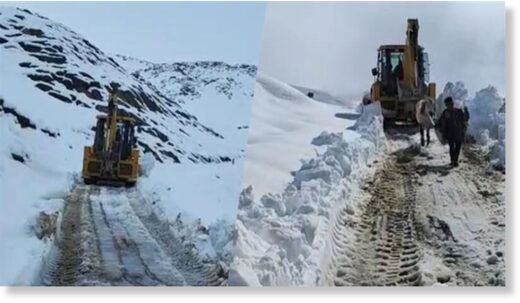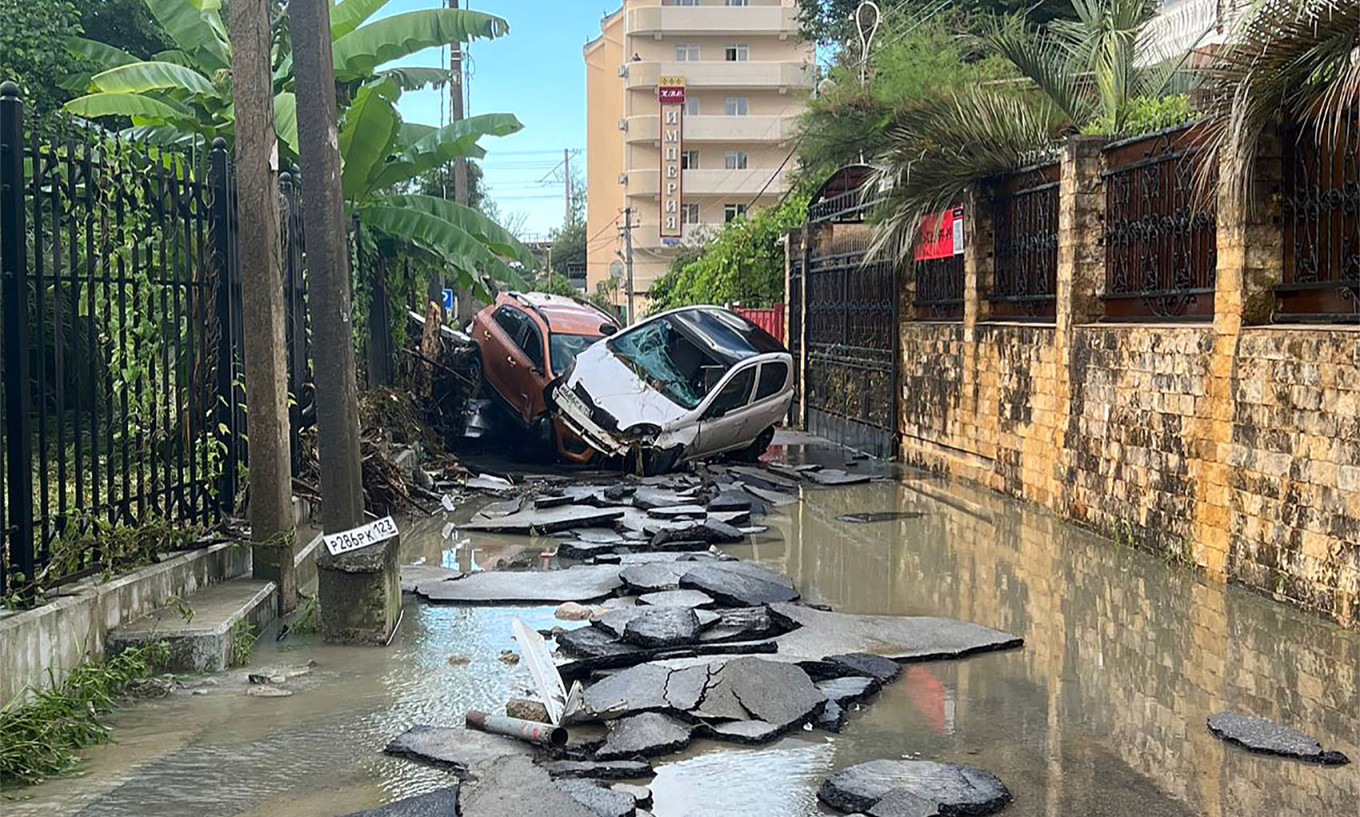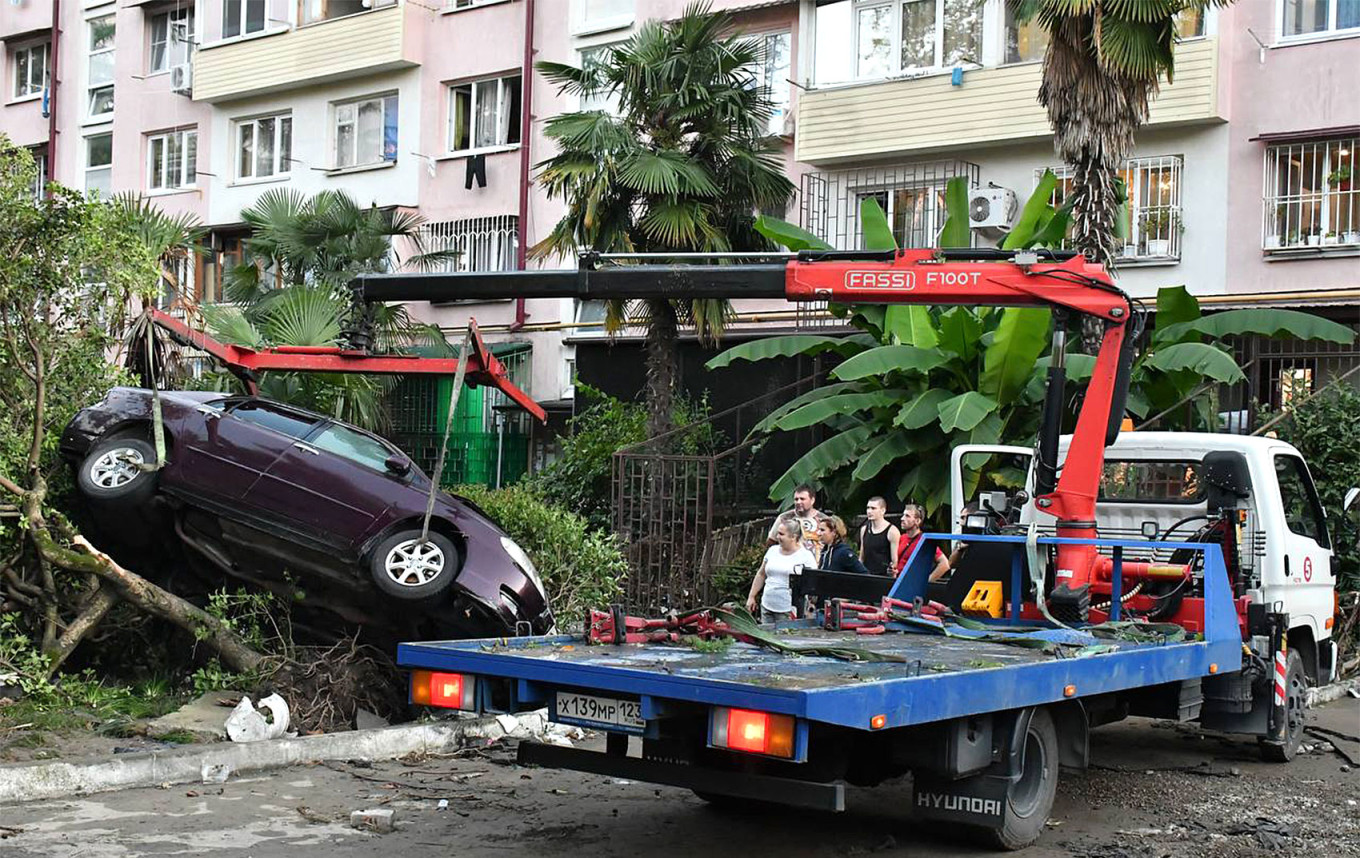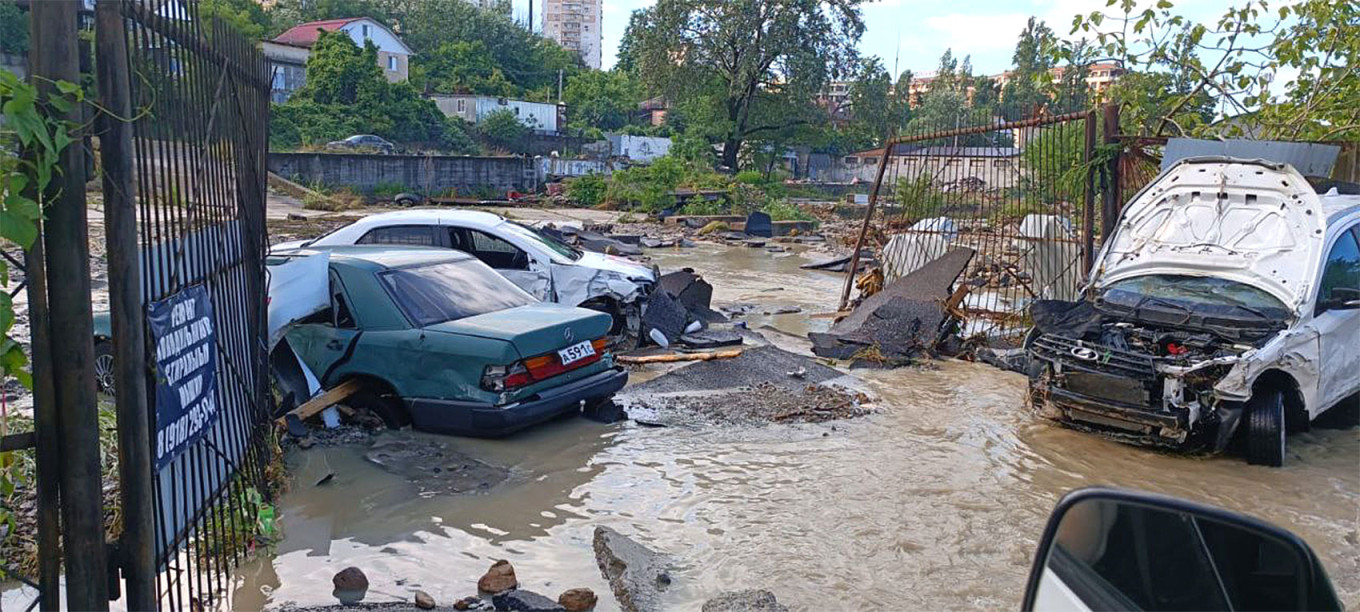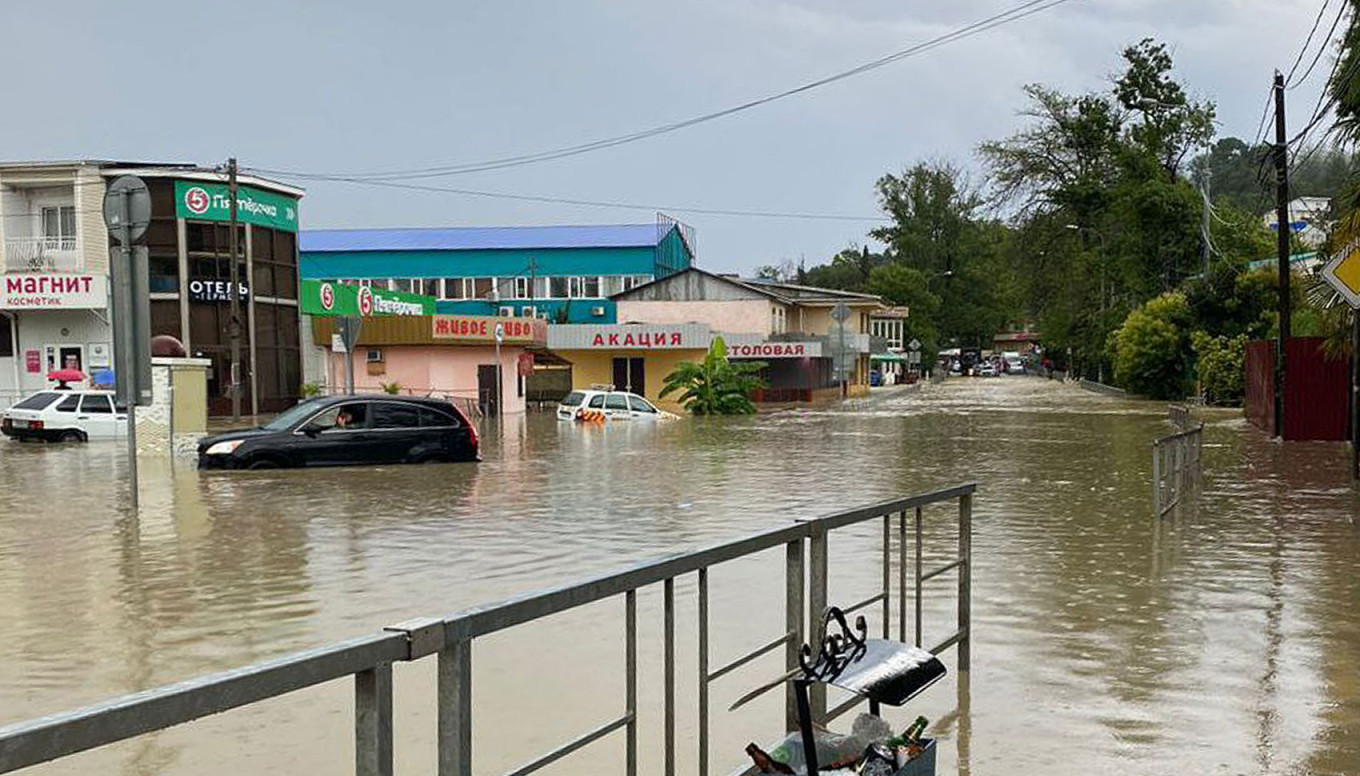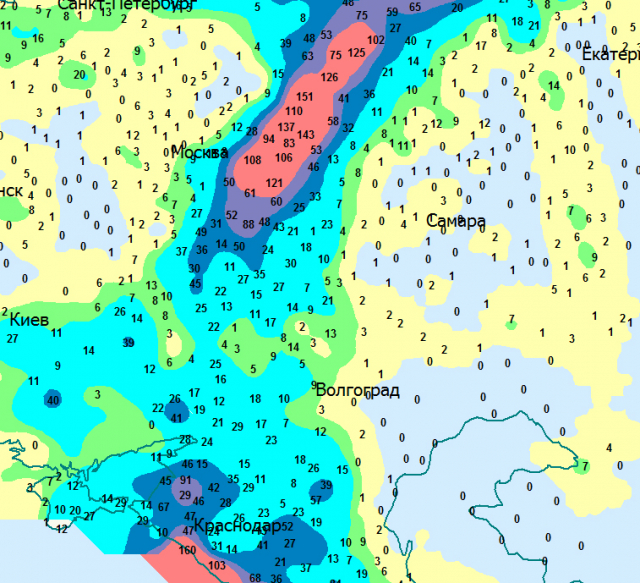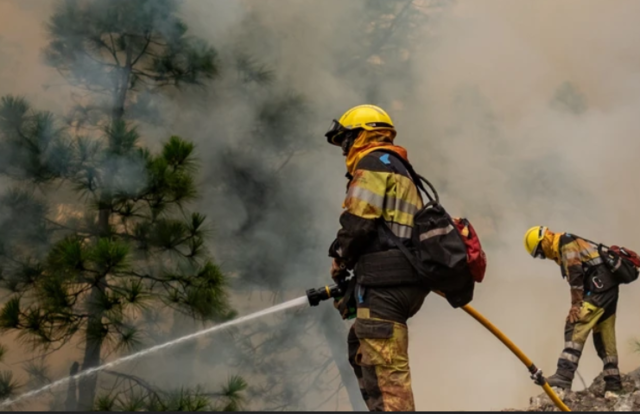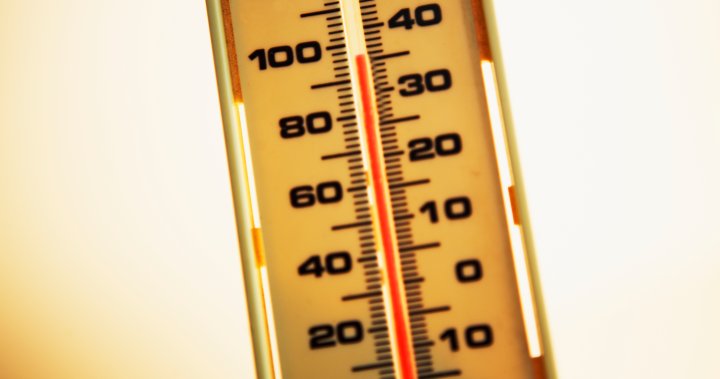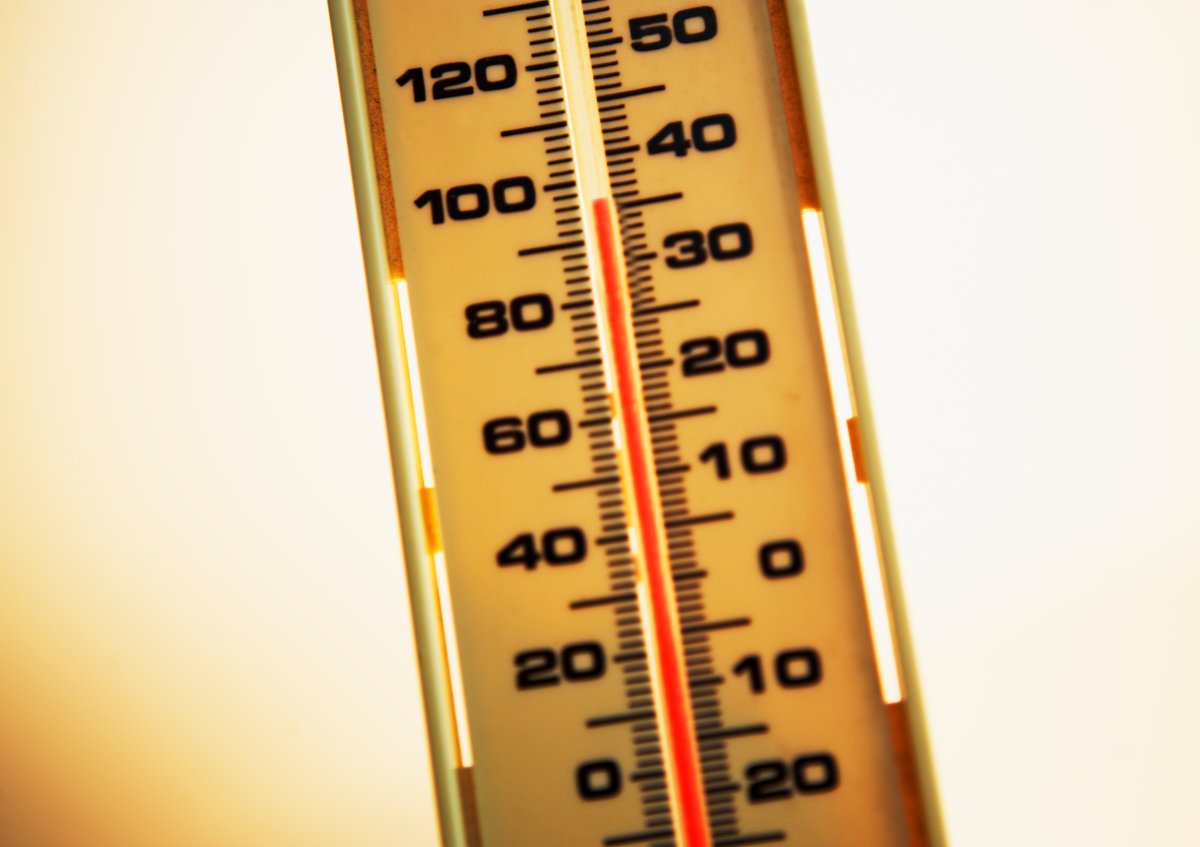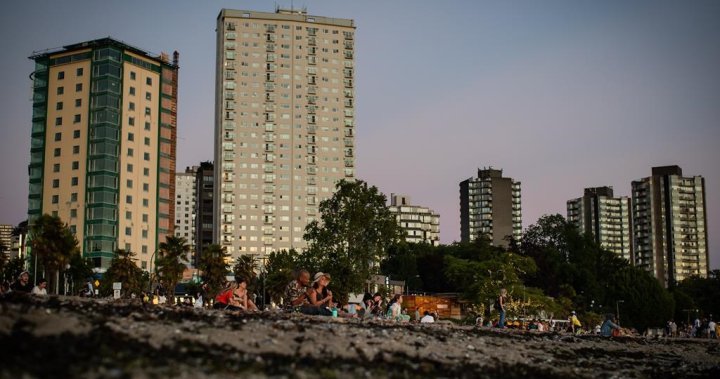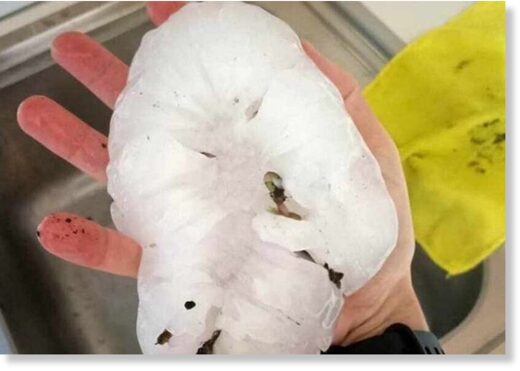This post began as a response to the ice in Greenland, which then connected to revisiting the North Atlantic Oscillation, which again led to the topic of the Arctic Oscillation and later on a comment on wind directions and the recent flooding in Russia.
The melting of the ice in Greenland was off to a late start
A part of the image from June 28, showed:
A newer image shows the trend as of July 20:
From now on, the rate of melting usually begins to decrease.
Nature or the model tries to make up for a late start:
The melt extent area does not translate directly to melt extent in terms of units of volumes of water. There is a difference for the effect of melting if the air is just above freezing or well above freezing. Both would qualify to give a red colour in the map, but not lead to the same amount of melting. If one goes to
Ventusky one can get an idea of the temperatures. like this from the time of posting:
The Polarportal page about
current weather has this image below, which shows predominant wind directions with temperature anomalies for the current period. Parts of Greenland are warmer, some slightly cooler, or as usual.
Note the small diagrams, in the lower left corner, which shows the North Atlantic Oscillation index for since May 1.
The North Atlantic Oscillation
The
Polar Portal has:
Generally speaking, there is very often high pressure over the Azores and surrounding areas, whilst there is very often low pressure over Iceland.
The pressure difference between the Azores and Iceland varies over time, and this variation is described by the so-called North Atlantic Oscillation (NAO). The NAO index is thus a measure of how strong westerly winds are over the East Atlantic and surrounding regions.
If the pressure difference is great, strong westerly winds blow, and we say that the NAO index is positive; if the pressure difference is small, the westerly winds will be light, and the NAO negative. Occasionally, the pressure over Iceland may even be higher than that over the Azores. This will result in an easterly wind and a strongly negative NAO index.
In simple terms, a high NAO index means mild winters and cool summers in large parts of Europe, whilst a negative index results in cold winters and hot summers. It has also been a well-known phenomenon for more than 250 years that it is often cold in Greenland when it is warm in Denmark, and vice versa. When the
NAO index is negative, the weak westerly air currents have a tendency to exhibit greater curvature, which increases the probability of warmer air from the south flowing up towards Greenland.
The NAO index can be determined in different ways. It can, for example, be seen directly from measurements of air pressure on Iceland and the Azores or Gibraltar. Re-analyses, however, are performed on a grid, and it is therefore more accurate to use a so-called EOF analysis, which provides more or less the same result, although based on the distribution of pressure throughout the Atlantic region.
The NAO index presented here on this page is calculated by the Climate Prediction Center at NOAA/ National Weather Service, and the calculation is described
here.
Daily NAO data is obtained
here.
The NAO index varies, sometimes negative, sometimes positive. One illustration found
here shows:
From a
German Wiki page about the NOA, there is an illustration of what it means for the winds and the weather:
The North Atlantic Oscillation connects to Arctic Oscillation.
The Wiki explains:
The
Arctic oscillation (
AO) or
Northern Annular Mode/
Northern Hemisphere Annular Mode (
NAM) is a weather phenomenon at the Arctic pole north of 20 degrees latitude. It is an important
mode of climate variability for the Northern Hemisphere. The southern hemisphere analogue is called the
Antarctic oscillation or Southern Annular Mode (SAM). The index varies over time with no particular periodicity, and is characterized by non-seasonal
sea-level pressure anomalies of one sign in the Arctic, balanced by anomalies of opposite sign centered at about 37–45° N.
[1]
The North Atlantic oscillation (NAO) is a close relative of the Arctic oscillation. There is debate over whether one or the other is more fundamentally representative of the atmosphere's dynamics. The NAO may be identified in a more physically meaningful way, which may carry more impact on measurable effects of changes in the atmosphere.
[2]
In June 2023, the Arctic oscillation index was slightly negative according to the
data set.
How the Arctic oscillation index is calculated
The Arctic oscillation index is defined using the daily or monthly 1000 hPa geopotential height anomalies from latitudes 20° N to 90° N. The anomalies are projected onto the Arctic oscillation loading pattern,
[5] which is defined as the first
empirical orthogonal function (EOF) of monthly mean 1000 hPa geopotential height during the 1979-2000 period. The time series is then normalized with the monthly mean index's
standard deviation.
Of importance in the above description is geopotential height:
Geopotential height or
geopotential altitude is a vertical coordinate referenced to
Earth's mean
sea level (assumed zero potential) that represents the work done by lifting one unit mass one unit distance through a region in which the acceleration of gravity is uniformly 9.80665 m/s2.
[1] Geopotential
height (
altitude) differs from geometric (tapeline) height but remains a historical convention in aeronautics
[2] as the altitude used for calibration of aircraft
barometric altimeters.
The topic of barometric altimeters is found under
pressure altitude:
Pressure altitude is the altitude in the
International Standard Atmosphere (ISA) with the same
atmospheric pressure as that of the part of the atmosphere in question.
The
National Oceanic and Atmospheric Administration (NOAA) published the following formula
[1] for directly converting atmospheric pressure in
millibars (mb) to pressure altitude in
feet (ft):
ℎ=145366.45[1−(Station pressure in millibars/1013.25)^0.190284].
Assuming a standard pressure of 1013.25 millibar which is the same a 10025.25 hectopascal (hPa )at surface, a pressure indication in a plane can be converted to an altitude using a table or a
calculator. In this way, a pressure of a 1000 hPa, corresponds to an altitude of 363.6 ft or 110.8 meters. Returning to the Wiki about the
Arctic Oscillation, there is an image of the loading pattern, which from what I understand shows the average deviation of where the 1000 hPa level is found compared to expected. In the yellow and red areas, it is found at a higher altitude and in the blue areas at a lower altitude.
If we imagine a low pressure in the blue area, then the air will flow counterclockwise, whereas a high pressure system over the red area will push the air in a clockwise direction. Between them, the air will be pushed from West to East giving a westerly wind. If the low pressure is deep and the high pressure high, then the push will be stonger than if they both are weak.
Next is the image illustrating the concepts of a negative and a negative and a positive
Arctic Oscillation:
A comment on the flooding in Russia
What caused the polar trough to spread so much to the south is not explained.
Maybe a negative NOA index, favouring weak westerlies and meandering air currents, was a contributing factor for the downpour on the Black Sea. This is along the lines that
@nicklebleu suggested:
As far as I understand, under certain circumstances (which I don't remember) the jetstream, which flows in a fairly uniform circle around the globe suddenly starts to wobble and meander.
However, if one looks into the index, then it has been positive and negative many times without causing such flooding. Perhaps it was not so much that the low pressure system went south that caused the influx of cold air, but more that the low pressure system became unusually deep, thus allowing it to set in motion a larger mass of air and forcefully pull in much more cold air from the Arctic regions.
To verify this idea, one would need a map of where the centre of the low was, how it moved, and how deep it was. Even if this is not included in the Russian article, to get an impression of how large an area even a small low can affect, the next map of the current situation from Gismeteo, shows a small low pressure system, 995 millibars, close to Arkhangelsk, (the round circle to the upper right) which influences the direction of the wind directions in Scandinavia up to 2000 km away, and pulls in cold air from the north, giving people cloudy, and rainy summer days with temperatures around 15 degrees Celsius.
If a small low can move air 2000 km away, then an even deeper low should be able to move air still further away. Perhaps this is what happened for the regions near the Black Sea.
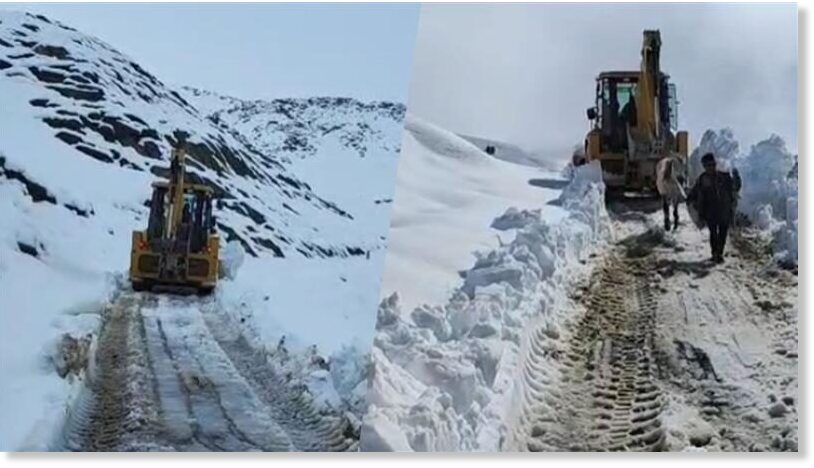
 www.sott.net
www.sott.net


